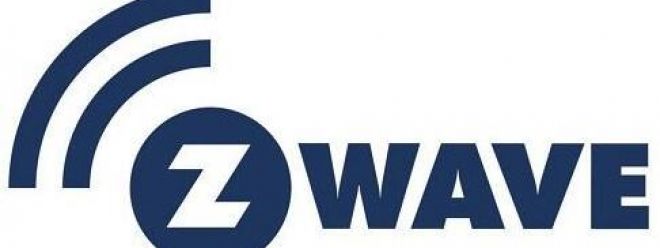Z-Wave is not worried about the potential threat of Project CHIP

This year is the 20th anniversary of Z-Wave's launch into the world. The smart home wireless protocol was originally proposed by the Danish company Zensys, and its birth can be traced back to 2001.
At that time, it was one of many technologies developed to support and promote the prosperity of the home automation market, and now it has withstood the test of time.
There are more than 100 million Z-Wave devices in smart homes worldwide, and more than 3,300 Z-Wave certified products are currently available in the market.
"The first product was actually launched in 2004," Mitch Klein, executive director of the Z-Wave Alliance and director of strategic partnerships, told the media in a recent video call.
"And it still works today. It is backward compatible and interoperable. This is actually the main difference between all these different technologies."
Z-Wave, along with Zigbee, Wi-Fi, Bluetooth, Thread and numerous proprietary wireless protocols, has played an important role in the smart home revolution in the past two decades.
However, a large number of communication methods sometimes cause end users in smart homes to feel confused and incompatible.
This is where the much-touted Project CHIP comes from. As a way to simplify manufacturer development and enhance consumer compatibility, CHIP has companies and institutions like Amazon, Apple, Google, and the Zigbee Alliance, which are part of its work.
Recently, news has revealed that the first batch of products certified for the CHIP project will be launched on the market later this year.
About Project Connected Home over IP
Therefore, the lack of Z-Wave in this high-profile plan can be seen as a threat to the standards that have dominated smart homes for 20 years.
However, according to Mitch Klein, this is not the case.
He explained: “It’s incorrect to think that Z-Wave is on the other side of this situation, and it’s not.” “I won’t involve some of their challenges because we all have them. But CHIP focuses on IP . Tell me about devices that can use battery-powered IP."
"Avoid talking about the rabbit hole, it's just that it's not just Z-Wave, but also that Zigbee needs to develop some type of CHIP communication channel, so we are actually communicating with them and cooperating with them."
Powerful ally
Yale University chairpersons Jason Williams and Asda Abloy agree.
He explained to us: "I participate in multiple technical committees, including Z-Wave." "I am also on the Thread board, which is promoting the CHIP plan. However, we are not deciding on technology, but with all parts of the world. Of partners.
"But what I want to say is that CHIP still has a lot of work to do, because Z-Wave now has the most devices deployed in the residential security and home automation markets, and so far, there is still a lot of room for exploration."
"Therefore, I think that even with the arrival of CHIP, Z-Wave will still maintain relevance through the installation base and technology of the major companies that have chosen to deploy Z-Wave equipment."
Williams added: "In terms of chips, there is still a lot of work to be done, or even impossible to solve." "We have seen other technologies like Thread come out, and they have attracted some attention. However, you can't ignore the fact that, That is, there are millions of Z-Wave devices out there, and they are operating very well."
future
So, as smart homes become more and more mainstream, facing both threats and huge opportunities, what should Z-Wave do next?
In addition to enhancing existing technologies by introducing technologies such as Z-Wave Long Range, the wireless range promised by Z-Wave Long Range is four times that of conventional Z-Wave signals. The major news of Z-Wave in the past year or so is Z-Wave Alliance is now a Standards Development Organization (SDO), opening the Z-Wave network layer and communication protocol for the Z-Wave specification.
Essentially, this means that the Z-Wave alliance has more freedom.
"This is a process. The first process is actually to separate the Z-Wave Alliance and the entire Z-Wave from Silicon Labs as an independent platform. You can imagine this is a considerable effort. In fact, we are in eight months It’s a miracle to achieve this goal within," Mitch Klein explained.
"The next step is to create the Z-Wave open stack, which will allow other chip companies to participate."
Klein was enthusiastic about the possibilities created by the opening of this technology. "We know that there is a fact that silicon manufacturers are very interested in this. Maybe no one has really thought of this name, and this is not in the smart home or the Internet of Things business.
"This will allow other chip companies that have been looking for ways to enter the Internet of Things to quickly enter."
Z-Wave prides itself on being super safe, and Mitch is eager to point out that Z-Wave "has never been hacked outside the lab."
He emphasized that open platforms will not lead to security vulnerabilities.
He explained: "The standardization process does not mean reducing quality." "We will still have the same protection measures as before in terms of products; they need to go and get certified."
This is not what they care about.
"If you look back at the history of Z-Wave, then there has been innovation in terms of security within interoperability. I mean, they continue to make improvements gradually in the process. This is why we have grown from 300 to 500 700 to get all these incremental improvements.
"Security is very important, but from the perspective of Z-Wave, we don't have to worry because we have been using it for a long time, it is rock solid, and we know it will only get better."
【Editor in charge: Zhao Ningning TEL: (010) 68476606】